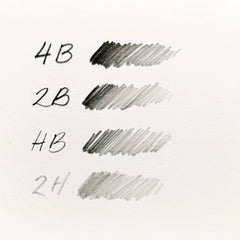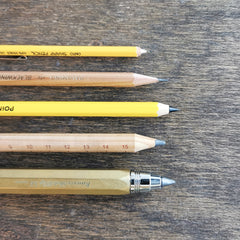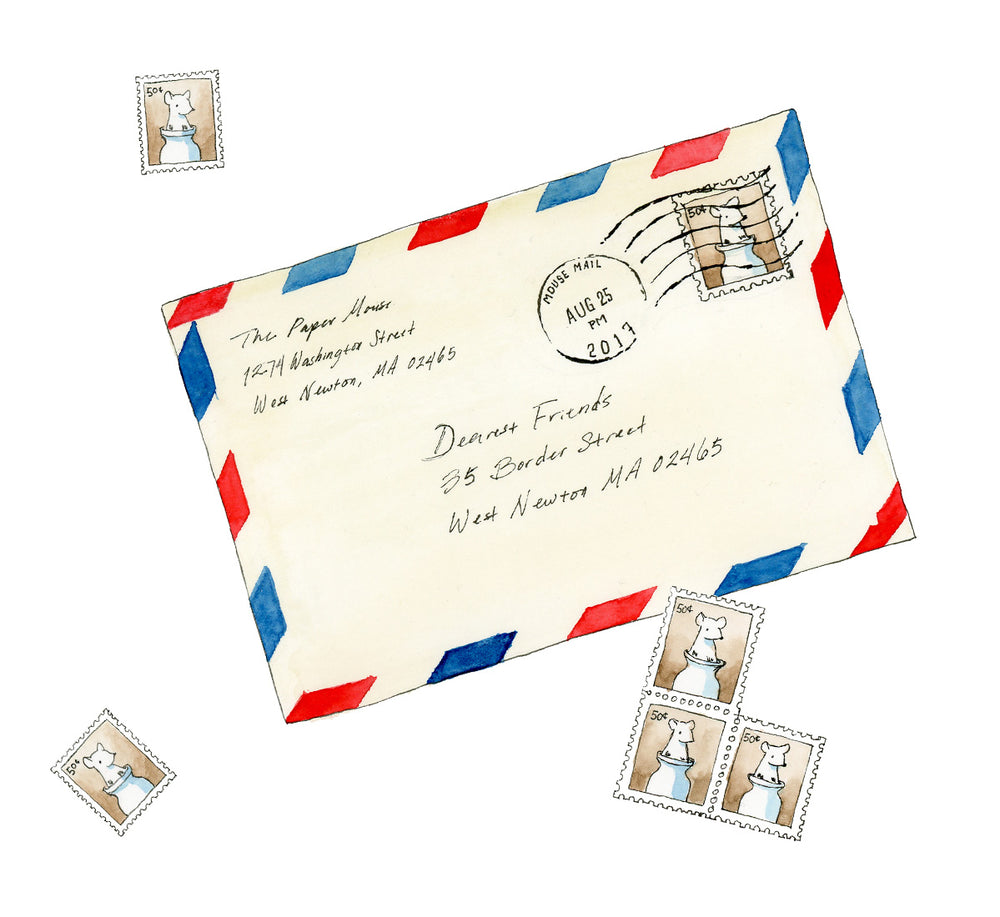All About Pencil Lead

“Lead” is a bit of a misnomer for the material inside a pencil. The name comes from the lead stylus that the ancient Romans used to etch into tablets or papyrus, but pencil "lead" is really made of powdered graphite bound together with clay. By mixing different amounts of clay and graphite, pencil makers can vary the hardness (or “grade”) of the lead. The more graphite in the lead, the softer it will be and the darker the line it produces; the more clay it contains, the harder the lead and the lighter the line.
Lead grade: a primer

The numbers and letters on the side of a wooden pencil or on a pack of pencil lead, like “HB” or “#2,” indicate the grade or hardness of the lead. There’s no universal standard for these pencil grades, so they may vary slightly from brand to brand. However, they usually follow one of two grading scales: the HB scale or the less common numerical scale.
On the HB scale, H pencils are on the harder end of the spectrum and B pencils are on the softer end. A pencil might be marked H, 2H, 3H, or B, 2B, 3B, and so on. The higher the number in front of the letter, the harder or softer the pencil is. HB is right in the middle of the scale. (Sometimes the HB scale also includes an F pencil, which falls between H and HB and indicates a lead that sharpens to a fine point.)
But what about the ubiquitous #2 pencil? The #2 pencil is graded on the numerical scale, which is used solely by American pencil manufacturers. On this scale, the higher the number, the harder the lead will be. The popular #2 is equivalent to an HB pencil.
Choosing a lead grade

These numbers and scales are all well and good, but how to choose which grade to write with? Pencils in the middle of the spectrum, like HB and #2, are usually preferred for writing. They’re typically soft enough to write without scratching and dark enough to make a bold mark, but not so soft and dark that they smudge all over the paper.
Softer pencils are preferred for drawing and shading, and may be useful for specific functions like carpentry or sewing. Harder pencils will produce light clean lines that are useful for technical drawings, fine details, and preliminary sketches. It’s always good to test out different grades to find your personal preference, and you may like to keep a few grades on hand for different purposes.
Lead size

The other thing to consider when choosing a pencil lead is size. Wooden pencils and clutch pencils use wider leads, usually around 2mm. These wide leads can be sharpened to a point for fine writing or used for shading broad areas. If you prefer bold lines, write with a heavier hand, or do a lot of shading, you might prefer a wider lead.
Mechanical pencils, on the other hand, use very slim leads, which range in size from very tiny (0.2mm) to rather large (0.9mm and even wider). It’s easiest to find mechanical pencils that hold the most popular lead sizes, 0.5mm and 0.7mm. Because mechanical pencil leads are so thin, they produce fine lines without any sharpening. However, they’re less ideal for shading, and writers with a heavier hand may find the lead snaps frequently.
Lead jams
A final note for users of mechanical pencils: occasionally the thin leads in a mechanical pencil may get jammed inside the pencil tip. Some mechanical pencils come with a thin wire called a clean-out rod attached to the underside of the eraser. If the lead jams inside your pencil, you can poke the clean-out rod down through the top of the pencil tip to clear out the lead. If your pencil doesn’t come with a rod, any thin, sturdy wire should do the trick.



I have recently purchased a few mechanical pencils and the main problem they had being used is a lead jam in the tip me of the pencil.
I was looking for a diagram of pencil lead, not a summary.
thank you for your beautiful entry with your web design.
Leave a comment